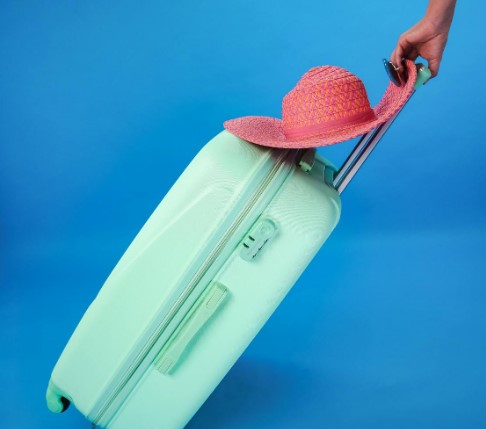News
F-1 Student Visa Guide: Everything You Need to Know

For many international students, the F-1 student visa is the gateway to studying in the United States. The U.S. is home to some of the world’s top universities and offers a wealth of academic, cultural, and professional opportunities that attract students from all over the globe. However, obtaining an F-1 visa requires navigating through a detailed process and understanding the requirements that come with it.
In this guide, we will explain everything you need to know about the F-1 student visa, including the application process, eligibility requirements, and the rights and responsibilities of an F-1 visa holder. Whether you’re planning to study at a U.S. college or university or are already in the process of applying, this article will provide the clarity you need to successfully obtain and maintain your F-1 student visa. For daily updates, open usaenlinea .com.
- What is the F-1 Student Visa?
The F-1 visa is a non-immigrant visa issued to foreign students who wish to study in the United States at an accredited academic institution, such as a college, university, conservatory, or seminary. The F-1 visa is one of the most common visas used by international students, and it allows them to live in the U.S. while pursuing full-time academic coursework.
Key Features of the F-1 Visa:
- Full-Time Study Requirement: To qualify for an F-1 visa, students must be enrolled in a full-time academic program.
- Temporary Stay: The F-1 visa is a temporary visa, and students are expected to return to their home country upon completion of their studies.
- Work Restrictions: F-1 visa holders are allowed to work under certain conditions, but they must follow strict guidelines to maintain their visa status.
- Who is Eligible for an F-1 Student Visa?
The F-1 visa is specifically for individuals who wish to pursue academic studies at a U.S. institution. To qualify for the F-1 visa, applicants must meet several criteria:
2.1 Acceptance into a SEVP-Approved School
Before applying for an F-1 visa, students must be accepted into a U.S. school that is approved by the Student and Exchange Visitor Program (SEVP). This is a program run by the U.S. Department of Homeland Security that monitors international students and exchange visitors.
- The SEVP-approved school will issue a Form I-20, which is required to apply for the F-1 visa. The Form I-20 confirms that the student has been accepted into a full-time academic program.
2.2 Proficiency in English
Students must demonstrate a sufficient level of English proficiency to succeed in their academic studies. Some universities may require students to submit scores from standardized English tests, such as the TOEFL or IELTS, to prove their language ability. However, some schools offer English language programs for students who need to improve their language skills before starting their academic coursework.
2.3 Financial Proof
Applicants must provide evidence that they have sufficient funds to support themselves while studying in the U.S. This includes tuition, living expenses, and other fees. This proof is typically shown through:
- Bank statements
- Sponsorship letters from family members or other individuals
- Scholarship letters or awards
The U.S. government wants to ensure that students will not become dependent on U.S. public assistance programs during their stay.
2.4 Intent to Return to Home Country
The F-1 visa is a non-immigrant visa, which means that students must demonstrate an intent to return to their home country after completing their studies. This is typically shown through ties to the home country, such as family, property, or a job waiting upon return.
- The Application Process for the F-1 Visa
Applying for an F-1 student visa involves several steps. The process can take several weeks or even months, so it’s important to start early. Here’s a step-by-step breakdown of the application process:
3.1 Step 1: Apply and Get Accepted to a SEVP-Approved School
The first step in obtaining an F-1 visa is to apply and be accepted into a U.S. school that is approved by the SEVP. This school will issue a Form I-20, which is a critical document needed to apply for the visa.
3.2 Step 2: Pay the SEVIS Fee
The Student and Exchange Visitor Information System (SEVIS) is a system used by the U.S. government to track international students. Before applying for the F-1 visa, students must pay the SEVIS I-901 fee, which helps fund the system. The fee is typically around $350 and must be paid online through the SEVIS website.
- After paying the SEVIS fee, students will receive a confirmation receipt, which they need for the visa application.
3.3 Step 3: Complete the DS-160 Form
The DS-160 form is the online application form required for most non-immigrant visa applications, including the F-1 visa. This form collects biographical information, travel plans, and other details necessary for processing the visa application.
- After completing the DS-160 form, applicants will receive a confirmation page with a barcode that must be printed and brought to the visa interview.
3.4 Step 4: Schedule the Visa Interview
Once the DS-160 form is completed, applicants need to schedule a visa interview at the U.S. embassy or consulate in their home country. Waiting times for visa interviews vary by location, so it’s important to schedule the interview as early as possible.
- The U.S. Department of State’s website provides information on visa appointment wait times and how to schedule interviews.
3.5 Step 5: Attend the Visa Interview
On the day of the interview, applicants must bring the following documents:
- Form DS-160 confirmation pagewith barcode.
- Form I-20issued by the SEVP-approved school.
- SEVIS fee payment receipt.
- Valid passport(with at least six months of validity remaining).
- Visa application fee receipt(if required).
- Financial proofshowing that the applicant has enough funds to cover tuition and living expenses.
- Passport-sized photographsthat meet U.S. visa photo requirements.
During the interview, a consular officer will ask questions to verify the applicant’s eligibility and intent to study in the U.S. It’s important to be honest, confident, and prepared to discuss your educational goals, financial support, and plans to return to your home country.
3.6 Step 6: Wait for Visa Approval
After the interview, the consular officer will determine whether to approve the visa. If approved, the student’s passport will be returned with the F-1 visa stamp, and they can travel to the U.S.
- Processing times for F-1 visas vary depending on the embassy or consulate, so applicants should plan accordingly.
- Rights and Responsibilities of F-1 Visa Holders
Once you receive your F-1 visa, you must adhere to certain rights and responsibilities to maintain your status as a student in the U.S. Here’s an overview of what F-1 visa holders can and cannot do:
4.1 Rights of F-1 Visa Holders
- Full-time Study: F-1 visa holders have the right to study full-time at an SEVP-approved U.S. school.
- On-Campus Employment: F-1 students are allowed to work up to 20 hours per week during the academic semester and full-time during breaks on campus. On-campus jobs could include positions in libraries, student centers, or dining halls.
- Optional Practical Training (OPT): After completing their studies, F-1 students may be eligible to work in the U.S. for up to 12 months through Optional Practical Training (OPT)in their field of study. STEM students may extend OPT for an additional 24 months.
- Curricular Practical Training (CPT): F-1 students can engage in internships or work experience related to their major through Curricular Practical Training (CPT), which can be done while studying.
4.2 Responsibilities of F-1 Visa Holders
- Maintain Full-Time Enrollment: F-1 students must be enrolled full-time in their academic program and maintain satisfactory academic progress.
- Report Address Changes: F-1 students must report any address changes to their Designated School Official (DSO) within 10 days of moving.
- Work Restrictions: F-1 students can only work on-campus or participate in OPT and CPT programs. Unauthorized off-campus employment is prohibited and could result in visa termination.
- Keep Valid Passport and Visa: F-1 visa holders must ensure their passport and visa are valid throughout their stay in the U.S. If the visa expires, students must leave the country or apply for an extension.
- Conclusion
The F-1 student visa is an excellent opportunity for international students to pursue academic studies in the United States. However, the process of obtaining and maintaining an F-1 visa can be intricate, requiring students to meet several eligibility requirements, pay necessary fees, and submit the proper documentation.
By following the steps outlined in this guide, staying informed about visa requirements, and maintaining a clear understanding of your rights and responsibilities as an F-1 visa holder, you can make the most of your educational experience in the U.S. The F-1 visa is not just a ticket to higher education but also a chance to immerse yourself in American culture, build professional connections, and lay the foundation for future career success.
-

 Rappers9 months ago
Rappers9 months agoGloRilla Net Worth: Height, Age, Bio, Real Name & Career
-

 Businessman9 months ago
Businessman9 months agoBrandon Fugal Net Worth: How Rich is Skinwalker Ranch Owner?
-

 Rappers3 years ago
Rappers3 years agoBigXthaPlug Net Worth: Height, Age, Real Name & Career
-

 TV Stars9 months ago
TV Stars9 months agoKaleb Cooper Net Worth: How Rich is the TV Star Actually?
-

 Internet Stars3 years ago
Internet Stars3 years agoMufti Menk Net Worth: How Rich is the Islamic Speaker Actually?
-

 TV Stars9 months ago
TV Stars9 months agoCarla Diab Net Worth: How Rich is the TV Star Actually in 2025?
-

 Businessman2 years ago
Businessman2 years ago7 Proven Lead Generation Strategies To Implement in 2023
-

 Rappers9 months ago
Rappers9 months agoDD Osama Net Worth: Height, Age, Real Name, Career & More






















You must be logged in to post a comment Login